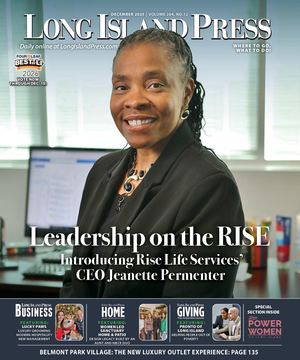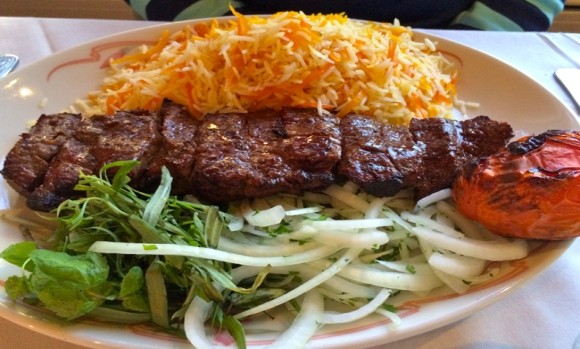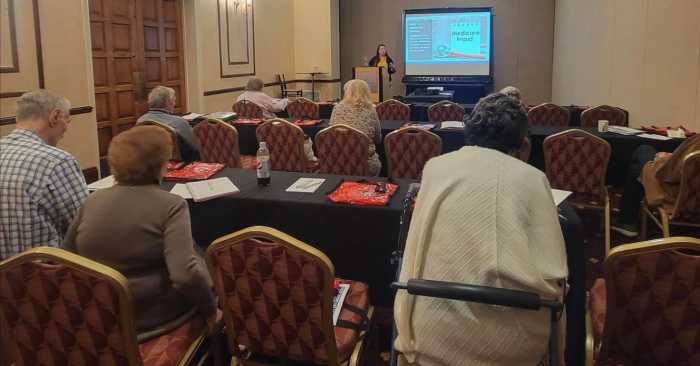The Great Neck peninsula is home to some 40,000 residents. The median age is around 43 years and there is growing diversity, with significant Asian demographic growth in the recent decade, mirroring Nassau County’s broader shifts.
Our area is very educated and very affluent. While it may appear that the main ethnic communities (Persian, Kosher, Asian) live in completely different worlds, our melting pot has common ground in significant ways.
We are all known to be family-oriented, traditional and have strong school and community engagement.
Persian food is flavorful and delicious, as is Chinese/Asian food. Both feature a heavy emphasis on rice and stews. There is no fusion between the two to be had, really, with one notable exception: Toku’s crispy rice appetizer, a morsel of fish on top of Persian tahdig (crispy rice). You’re welcome!
Ain’t Nobody Got Time For That
Great Neck has drawn many immigrants and their children–Persians, Chinese-speaking, Russian-speaking, Israeli, and so on.
Across the board, the Millennials and Gen Z cook at home far less frequently than their parents or grandparents here and abroad. This is because the cultural meals of their homelands are more labor-intensive than modern schedules can allow.
In many “dual-income” households, there is little time to shop and cook mid-week due to fast-paced and demanding careers and long commutes. Nor do younger generations have the culinary fluency (or patience) to replicate complex, multi-step recipes. For many of us, takeout or fast-casual dining is de rigueur. To achieve work-life balance and marital harmony, we are “adding to cart” more than ever.
Basic versus Extra
My American-born cousins and I grew up with instant coffee (omg!) and later, used travel coffee cups during our daily commute.
Today, I regularly make my coffee at home or at my office, but I power up my Nespresso. My adult kids go to the local barista for their coffee habit, and pay a premium for their cup of java. I can almost hear the tsk tsk of my paternal grandmother z”l, gasping at our modernity.
It’s official: a 2022 Pew Research Center study noted that second-generation immigrants are less likely to cook traditional meals regularly at home, especially in Latino and Asian communities. Studies on Asian-American millennials show higher reliance on eating out and food delivery, despite strong ties to cultural food traditions. And so it goes, for many second- or third-generation Americans, food and home cooking remain a powerful tie to identity, but it’s often expressed differently.
Restaurant exploration, trying fusion spots, or supporting diaspora-run eateries. Or, for the more culinarily adventurous, following short-form recipes on TikTok or Instagram. They can be simplified or more zhuzzed-up versions of mom’s classics. (Shout out to Great Neck’s Chef Zach Neman!)
As a child of Iranian immigrants, I was completely enmeshed in my family of origin. Raised in a traditional Persian household, I have vivid memories of my stay–at–home grandmothers “slaving away” in the kitchen before the Friday night Shabbat meal.
The aromatic stews and rice dishes were a regular smell and sight. In those days, there were fewer places to go out and eat while maintaining a kosher lifestyle. Today, there are many options, some Persian-kosher, others Persian-non-kosher. Of course, for the close-knit Persian community, we have a different excuse, err, reason not to cook altogether. Why sweat in the kitchen when you can get amazing takeout from mom’s in town? Below, a basic primer of classic Persian fare. #iykyk
Persian Cuisine
Great Neck’s food establishments that cater to Persian/Israeli tastes are packed on Friday nights before the Shabbat holiday.
In Persian cuisine, rice is central, with crispy bottom tahdig a huge delicacy. Herbs and dried fruits are frequently used in rice and meat dishes, and meals are often shared family-style, with bread, pickles (torshi), and sabzi khordan (fresh herbs) as sides. Below, a sampling of Persian fare:
- Chelo Kabab, grilled meats, (beef koobideh, barg) served with saffron rice, grilled tomato, and raw onion.
- Ghormeh Sabzi is an herb stew made with parsley, cilantro, fenugreek, dried lime, red kidney beans, and beef or lamb.
- Fesenjan, a sweet-tart luxurious stew of ground walnuts and pomegranate molasses, often with duck or chicken.
- Sabzi Polo ba Mahi, a herbed rice with fish.
- Khoresht Bademjan, an eggplant and tomato-based stew with beef or lamb.
- Khoresht Karafs, a celery stew with mint, parsley, and lamb or beef.
Chinese Cuisine
Great Neck has many styles of Chinese, “Asian”, Japanese and fusion spots. Traditional Chinese home cooking varies widely across geographical regions and includes Sichuan, Cantonese, and northern, served family style.
Many classic dishes are regularly cooked in Chinese households, often Americanized for non-natives. Home-cooked meals are usually quick, balanced, affordable, and made with fresh ingredients, often incorporating rice, noodles, stir-fry techniques, and seasonal vegetables.
Typical flavor elements in home cooking include garlic, ginger, scallions, soy sauce, Shaoxing wine, vinegar, five spice, sesame oil, or chili oil. Unlike restaurant chefs, the home cook generally uses less oil, salt, and sugar, more vegetables and simplicity.
Bon Appetit
Nationally, post-pandemic, there is a focus and desire for local loyalty. Neighborhood over destination, at a smaller scale. Depending on who you ask, Great Neck’s food scene is diverse and vibrant, offering everything from upscale dining to cozy cafés.
Still, we clamor for more choice, more vibe, more cowbell. Overall, we want “less Asian, less kosher.” We also want more opportunities to dine al fresco with live music. And oh, couldn’t Millies come back, or maybe the next hip Poll Brothers spot? Maybe then, our local foodies will be satiated. Pop the corn.
Janet Nina Esagoff launched Destination: Great Neck, a 501c3 community organization, in 2021 @greatneckbiz. A second-career attorney, Esagoff Law Group PC was founded in 2017. Prior to the law, Janet designed special–occasion wear for teens and girls at her Bond Street atelier, “Party Girl.”




































